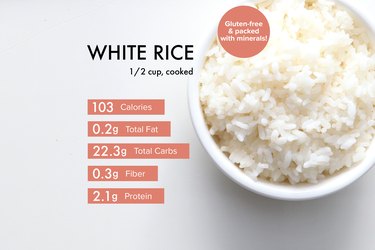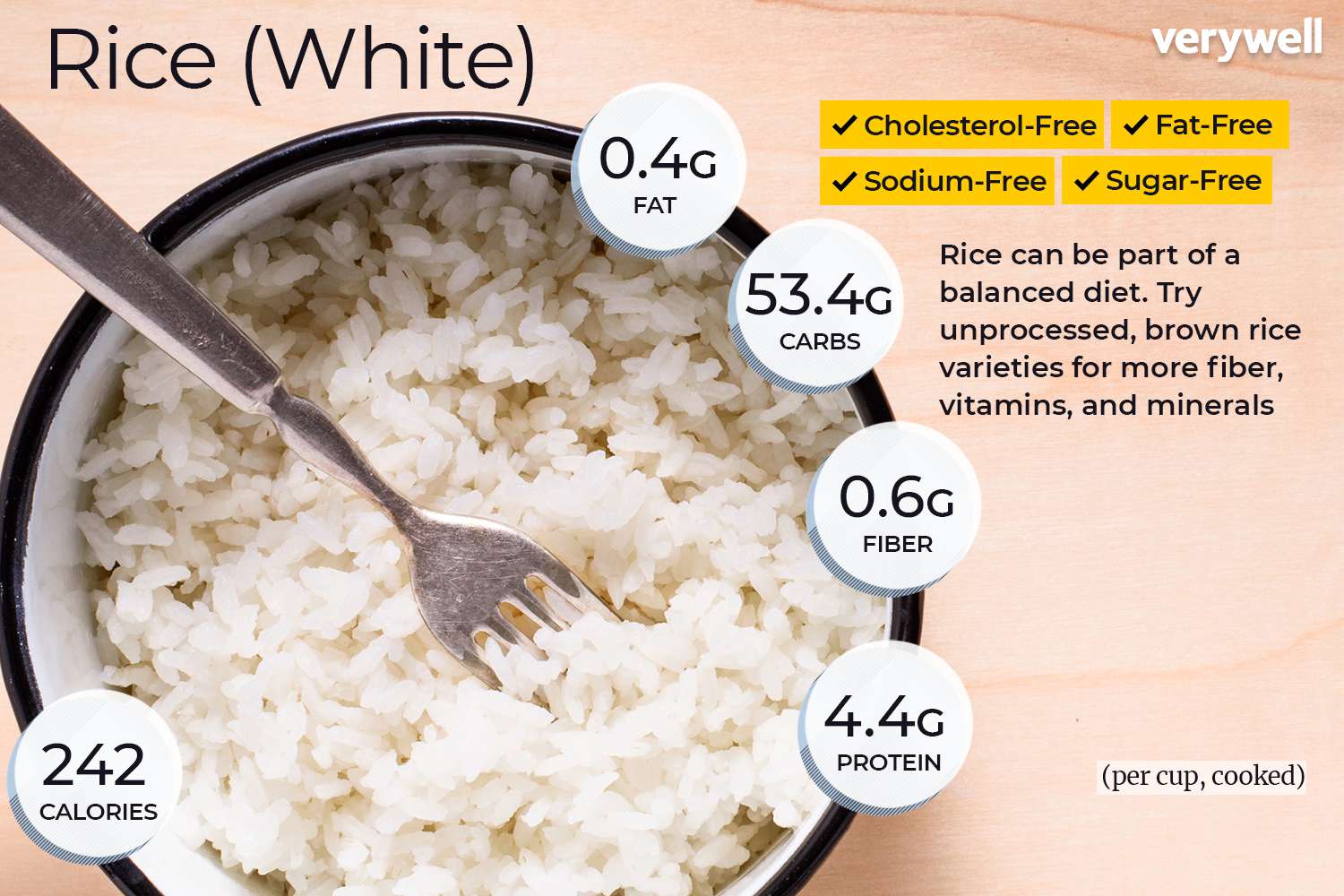Rice is a rich source of carbohydrates, providing energy and fuel for the body. Brown rice, in particular, is also packed with nutrients such as fiber, manganese, selenium, magnesium, and B vitamins.
It is a nutritious choice that can keep you satisfied and energized throughout the day.
:max_bytes(150000):strip_icc()/wild-rice_annotated-6830607c324e4775a58091e5e4e5c3a9.jpg)
Nutritional Composition Of Rice
Rice is a nutritious staple food that provides essential nutrients to the body. Understanding the nutritional composition of rice is vital for maintaining a healthy diet. Let’s explore the critical components of rice’s nutritional profile:
Carbohydrates
Carbohydrates are the primary source of energy for our bodies. Rice is rich in carbohydrates, which can help keep you energized throughout the day. A 100g serving of rice contains approximately 130 calories, with 10% of the daily value from carbohydrates.
Protein
Protein is essential for building and repairing tissues in the body. While rice is not considered a significant source of protein, it still provides a small amount. A 100g serving of rice contains approximately 2.36g of protein, contributing to about 5% of the daily value.
Fat
Rice is low in fat, making it suitable for those conscious about fat intake. A 100g serving of rice contains approximately 0.19g of fat, less than 1% of the daily value.
Fiber
Fiber is crucial for maintaining digestive health and promoting regular bowel movements. Brown rice, in particular, is an excellent source of fiber. It contains about 1.8g of fiber per 100g serving, aiding digestion and providing a feeling of satiety.
Vitamins And Minerals
In addition to carbohydrates, protein, fat, and fiber, rice provides essential vitamins and minerals. Some critical nutrients in rice include manganese, selenium, magnesium, and B vitamins. These nutrients are vital in various bodily functions, such as energy production, immune system support, and bone health.
In conclusion, rice offers a nutritional composition that can contribute to a healthy and balanced diet. It is a valuable source of carbohydrates, provides a small amount of protein, and is low in fat. Additionally, brown rice is packed with fiber, while rice generally contains essential vitamins and minerals. Incorporating rice into your meals can be a great way to nourish your body and meet its nutritional needs.

Health Benefits Of Rice
Energy Source And Fuel For The Body
Rice is a rich carbohydrate source, providing the body with the necessary energy to function optimally. Carbohydrates are the body’s primary fuel source for exercise and physical activities. Including rice in your diet can help keep you energized and satisfied throughout the day.
Rich In Essential Nutrients
Brown rice, in particular, is an excellent source of various essential nutrients. It contains fiber, manganese, selenium, magnesium, and B vitamins. These nutrients play crucial roles in maintaining overall health and well-being. Including brown rice in your diet can help you get these essential nutrients.
Promotes Digestion And Gut Health
Rice is easily digestible and gentle on the stomach, making it ideal for promoting healthy digestion. It is also rich in dietary fiber, which helps regulate bowel movements and maintain a healthy gut. Including rice in your diet can help prevent digestive issues such as constipation and bloating.
Supports Weight Management
Rice is a low-fat and low-calorie food, making it suitable for weight management. It provides a feeling of fullness and satisfaction, which can prevent overeating and snacking on unhealthy foods. You can control your portion sizes and maintain a healthy weight by including rice in your meals.
Can Be A Part Of A Balanced Diet
Rice is a versatile food that can be incorporated into a balanced diet. It can be paired with various vegetables, proteins, and healthy fats to create nutritious and delicious meals. Including rice as part of a balanced diet ensures you get a good mix of carbohydrates, proteins, fats, and essential nutrients.

Frequently Asked Questions about the Rice Nutrition Chart: How much nutrition does rice provide?
What Nutritional Value Does Rice Offer?
Rice is a rich source of carbohydrates, providing energy and satisfaction. Brown rice is incredibly nutritious, offering fiber, manganese, selenium, magnesium, and vitamins. It is a valuable addition to a healthy diet.
How Many Nutrients Are Present In Rice?
Rice is a rich source of carbohydrates, providing energy for the body. Brown rice, in particular, is packed with nutrients like fiber, manganese, selenium, magnesium, and B vitamins. It is a nutritious option for fueling exercise and keeping you satisfied.
How Nutritious Is A Bowl Of Rice?
Rice is nutritious as it is a rich source of carbohydrates, providing energy and satisfaction. Brown rice, mainly, is high in essential nutrients like fiber, manganese, selenium, magnesium, and B vitamins.
What Is The Nutritional Value Of A Serving Of White Rice?
White rice is a rich source of carbohydrates, providing energy and satisfaction. It also contains fiber, manganese, selenium, magnesium, and vitamins.
Conclusion
Rice is a valuable source of nutrition, especially regarding carbohydrates. It provides energy and satisfaction while fueling exercise. Brown rice, in particular, offers a wealth of nutrients such as fiber, manganese, selenium, magnesium, and B vitamins. Incorporating rice into a balanced diet can contribute to overall health and well-being.
So, next time you enjoy a bowl of rice, know you’re nourishing your body with essential nutrients.


